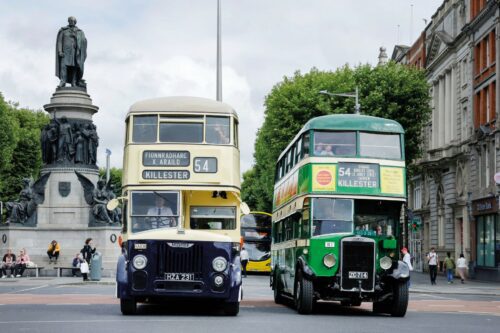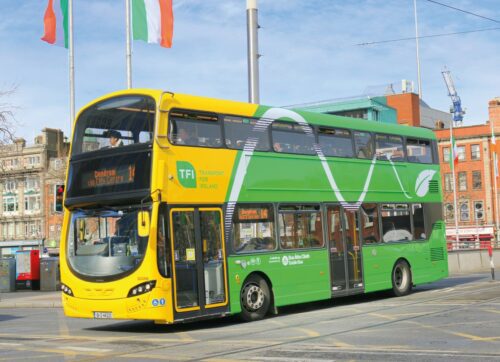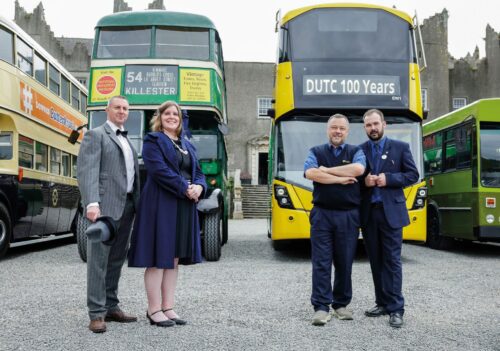
The Irish operator began its first route in July 1925, at a time when motor buses were beginning to replace the city’s tramway system
Dublin Bus celebrated 100 years of public transport history with style on Sunday 6 July, when a fleet of heritage buses embarked on a journey on the company’s original route 43. Six classic buses departed the Irish capital city’s Parnell Square at 1030hrs, and travelled along O’Connell Street to the start of the original route at Eden Quay, before heading toward Killester, where the route terminated.
The celebratory parade marked the 100-year history of public bus transport in Dublin. Today’s Dublin Bus is a direct descendant of the Dublin United Tramways Company (DUTC) that started operating buses in the city in 1925, at at time when the heyday of the tram was coming to a close, hastened by the rise of the internal combustion engine.
On 6 July 1925, route 43 from Eden Quay to Killester started operating, initially with two buses. The company’s Summerhill depot was opened in the same month and represented the first DUTC bus depot, although the initial DUTC bus fleet was garaged in Marlborough St. Routes have changed over time, with the longest-standing currently being the 39, 40 and 41, the latter being the least changed route, which makes its way from the city centre to Swords.
On 14 September route 40 will also celebrate its 100th anniversary. Dublin Bus CEO Billy Hann said: “We’re delighted to celebrate
this milestone with the National Transport Museum and all those who share a passion for Dublin’s transport story. What began with just two buses leaving Eden Quay in 1925 has grown into more than half a million journeys every day. While the city has changed in many ways, one thing that has never changed is our commitment to the people and communities we serve. Today, we celebrate this journey and proudly recognise the people, past and present, who have kept and continue to keep Dublin moving forward.”

The National Transport Museum’s Bob Laird, speaking at the event, added: “This is a great celebration of 100 years of bus transport in Dublin. The city’s transport heritage is an important part of its social history. We are honoured to show off R1, the first double decker in Dublin, dating from 1937. Along with all my colleagues in the museum, we are delighted with the role that our vintage buses can play in understanding and appreciating the rich history of transport in Ireland.”
Dublin Bus has continued to grow and evolve and now operates a fleet of over 1,000 buses based at nine depots across the city, carrying 159 million passengers in 2024, with up to 500,000 people travelling each day.
Since 2023, Dublin Bus has been working with Ireland’s National Transport Authority (NTA) in what it says is the largest transformation in the company’s history. The roll-out of electric buses continues at a rapid rate across its operations, with more than 10% of the company’s fleet now fully electric, with two depots also electrified and a third due to be commissioned in the coming months.
Many of the company’s fleet are supplied by Northern Irish manufacturer Wrightbus. Speaking about the event, CEO Jean-Marc Gales commented: “Congratulations to Dublin Bus on a remarkable 100 years of service to the people of Dublin. It’s an honour for Wrightbus to support this proud legacy with over 100 StreetDeck Electroliners now helping to drive a cleaner, quieter, and more sustainable future for the city. Dublin Bus’s forward-thinking vision and commitment to decarbonising transport led by Billy Hann is inspiring, and we’re proud to play a part in this next chapter of innovation and environmental leadership.”


